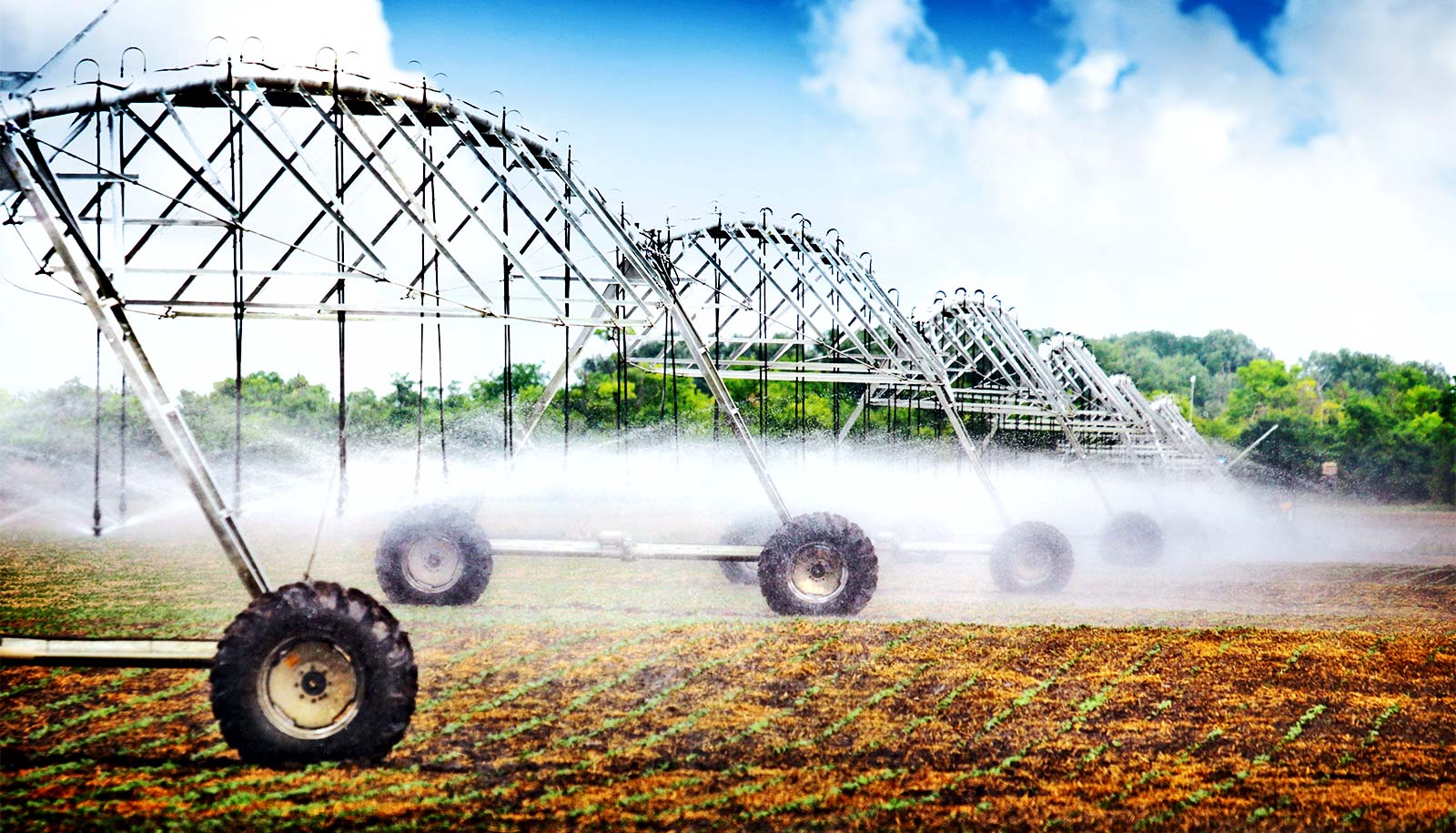
(Credit: Getty Images )
Smartphone device sniffs out toxin-producing algae in 15 minutes
A new system uses a smartphone to detect toxin-producing algae in water within 15 minutes.

A new highly sensitive system uses a smartphone to rapidly detect the presence of toxin-producing algae in water within 15 minutes, researchers report.
The system uses the phone’s wireless communications capabilities to generate test results on-site and report findings in real-time.
The technology could play a big role in preventing the spread of harmful microorganisms in aquatic environments, which could threaten global public health and cause environmental problems.
Monitoring toxin-producing algae
A sudden surge in the amount of algae and associated toxins in lakes, ponds, rivers, and coastal waters can adversely affect water quality, and in turn, may have unfavorable effects on human health, aquatic ecosystems, and water supply.
For instance, in 2015, an algae bloom wiped out more than 500 tons of fish in Singapore, and caused some fish farmers to lose millions of dollars.
Conventional methods of algae detection and analysis are time consuming, and require specialized and costly equipment, as well as skilled operators to conduct water sampling and testing.
One approach tests for the presence of chlorophyll using complex instruments that cost more than $2,200. Another common method involves cytometric and image analysis to detect algal cells—but this method involves equipment that costs more than $73,000.
“Currently, it can take a day or more to collect water samples from a site, bring them back to the laboratory for testing, and analyze the results. This long lead time is impractical for monitoring of algae blooms, as the management of contamination sources and affected waters could be slowed down,” says Bae Sung Woo, assistant professor from the civil and environmental engineering department at the National University of Singapore.
Cheaper, smaller, and highly sensitive
As reported in Harmful Algae, the device comprises three sections—a microfluidic chip, a smartphone, and a customizable 3D-printed platform that houses optical and electrical components including a portable power source and an LED light.
Researchers coated the chip with titanium oxide phthalocyanine, a type of photoconductive polymer-based material. The photoconductive layer guides water droplets along the chip during the analysis process.
The researchers then place the coated chip on top of the screen of a smartphone, which projects a pattern of light and dark regions onto the chip. When droplets of the water sample touch the surface of the chip, a voltage drop difference, created by the light and dark areas illuminated on the photoconductive layer, modifies the surface tension of the water droplets.
This causes the water droplets to move towards the dark illuminated areas. At the same time, the movement induces the water droplets to mix with a chemical that stains algae cells present in the water sample. Light patterns toward the center of the phone guide the mixture.
Next, an LED light source and a green filter embedded in the 3D-printed platform, near the camera of the smartphone, create the conditions suitable for the camera to capture fluorescent images of the stained algae cells. The user then sends the images to an app to count the number of algae cells present in the sample. The user can also send the images to another location via the smartphone to quantify the number of algae cells. The entire analysis process only takes 15 minutes.
The portable and easy-to-use device costs less than $220—excluding the phone—and weighs less than needed to generate reliable results.
Water quality tests: Anytime, anywhere
Researchers tested the system using water samples collected from the sea and reservoirs. They filtrated and spiked the samples with specific amounts of four different types of toxin-producing algae—two types of freshwater algae C. reinhardtii and M. aeruginosa, and two types of marine water algae Amphiprora sp and C. closterium.
Experiments used the new device and a hemocytometer, a standard cell-counting technique commonly used for water quality monitoring, to test for the presence of algae.
The new system was able to detect the four types of algae with an accuracy of 90%, comparable with the hemocytometer results.
“The combination of on-chip sample preparation, data capture, and analysis makes our system unique. With this tool, water quality tests can be conducted anytime and anywhere,” Bae says.
“This new method is also very cost efficient as the microfluidic chip can be washed and re-used. This device will be particularly useful for fish farmers who need to monitor the water quality of their fish ponds on a daily basis.”
Funding for the work came from the National Research Foundation Singapore through its Marine Science Research and Development Programme and the Ministry of Education.
Source: National University of Singapore
The post Smartphone device sniffs out toxin-producing algae in 15 minutes appeared first on Futurity.
Share this article:
This article uses material from the Futurity article, and is licenced under a CC BY-SA 4.0 International License. Images, videos and audio are available under their respective licenses.
Related Articles:
Cocktail of chemicals hide in Bangladesh’s water
April 22, 2020 • futurityHow aquifer recharge water can get contaminated with arsenic
Jan. 10, 2020 • futurityLinks/images:
- https://www.futurity.org/algae-climate-change-1877542/
- https://www.futurity.org/photoacoustic-effect-drinking-water-2100142-2/
- https://doi.org/10.1016/j.hal.2019.101638
- https://www.futurity.org/diatoms-algae-oceans-2109032/
- https://www.futurity.org/microfluidic-chip-digital-codes-1146342-2/
- http://news.nus.edu.sg/research/device-detects-harmful-algae
- https://www.futurity.org/toxic-algae-smartphones-2213272-2/
- https://www.futurity.org


